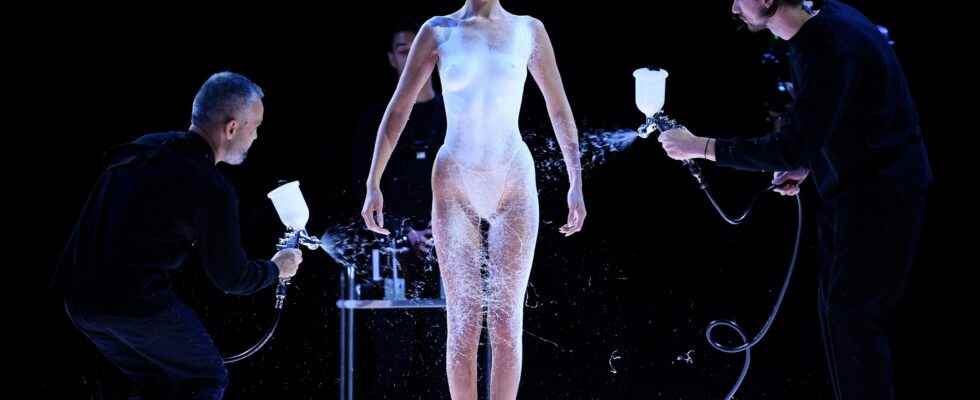Immersion in the Moët & Chandon cellars in Epernay, meeting with the craftsmen of the Guerlain house in Paris, visit of the Tanneries Roux in Romans-sur-Isère… From October 14 to 16, the LVMH group opened the doors of 57 houses. Objective of these Special Days? Invite the general public to discover the profession of thousands of artisans in the group… and seduce the younger generation.
Because the world of luxury is recruiting! Some 8,000 positions remain to be filled. “There is really a tension in terms of know-how. It’s a real problem”, notes Benjamin Fassenot, co-author of the BCG x Comité Colbert report “Luxury Outlook 2022”.
Leather goods, textiles, watchmaking, catering, hotels… No sector is spared. A lack that is all the more glaring as the level of requirement of these professions falls within the domain of art.
Create a pool of specialists
To overcome this deficiency, no track is ruled out. Starting with the most obvious: creating a pool of specialists. To ensure the sustainability of the various small houses that perpetuate these crafts and anticipate any sourcing problems, Chanel created 19M, which brings together 11 art houses, 600 craftsmen and employees. In order to see their know-how of excellence continue, other large houses have decided to open their own school. Thus, the Hermès School of know-how (approved by the National Education), the LVMH Institute of Excellence in Professions, the Ritz Escoffier School or even the Cartier Jewelry Institute.
Originally, the latter had been launched to train only in the profession of polisher. Thanks to the success of its model, the label has managed to reduce the shortage in a few years, and the school has expanded. “Today, we offer apprenticeship training for all jewelry trades: setter, jeweler-jeweler, lapidary, in partnership with the private jewelry school BJOP”, lists Alexandre Auberson, director of the institute.
Without always going as far as the creation of a dedicated establishment, the use of training or tutoring programs has become commonplace for these actors, encouraged in this by the “professional future” law which, since 2018, allows private companies to open their apprenticeship training centre.
Seduce…
But creating vocations, especially among young people, remains a major challenge. “It remains difficult because the crafts of the hand are not valued, concedes Antoine Arnault, general manager of Berluti, president of Loro Piana and ‘image and environment’ of the LVMH group. I caricature a little, but young people prefer to be influencers on Instagram.” So, to re-enchant these crafts, the group multiplies the seduction operations: “Excellent” program from college, initial or continuing training, promotion of talents. “We are also going to meet them, in several cities in France, to present these professions, which are not only those of LVMH. It is for the collective good”, adds Antoine Arnault.
These courses should further expand their ranks in the coming months to support the relocations inherent in French manufacturing. A phenomenon that was initially timid in the 2000s which accelerated with the Covid-19 pandemic and the war in Ukraine.
… and innovate
“This Made in France is accompanied by a modernization of know-how”, analyzes Jonathan Siboni, CEO of Luxurynsight, expert in data analysis in the luxury industry. Artificial intelligence, 3D scanner and printer, just-in-time order management software: French luxury players are at the forefront. According to the recent “Luxe et technologie” study conducted by Comité Colbert and Bain & Company, 3D printing and 3D imaging have an adoption rate of 35% and 45% respectively, and are being tested or considered in the three years by 11% and 12% of luxury companies.
Thus, the Kering group is currently training creative teams in the use of 3D design platforms. “For some products, up to 5 to 10 prototypes could be generated from the sketches of the creative team, explains Grégory Boutté, digital and customer relations director. The objective is to do all these iterations on 3D software at very high resolution that makes it very easy to change materials, textures or colors, without having to create all these physical samples.” A technique also used by smaller creators. Like Steven Passaro: “I use the 3D modeling and patronage software Clo3D, which allows me to skip 90% of the paper-canvas-prototype stage. The creation of a piece requiring three canvases and two prototypes in average, I save making 180 items each season!” Limitless creativity, precision, cost and waste reduction, operational efficiency… The advanced advantages are multiple.
After the design stage, the 3D printer is also installed in the workshops. In the world of jewellery, it is integrated, for example, into prototyping, molding and even polishing processes. A technology adopted by Cartier, Tiffany & Co or Chanel. “This forces us to be even more precise”, admits Patrice Leguéreau, director of Studio de Création de Joaillerie Chanel. Another application: leather goods, as at Dior or Balenciaga. The automobile is not left out, with the Czinger 21C hypercar model from Divergent 3D. But the most astonishing thing is undoubtedly its arrival in the kitchens of pastry chefs, for the creation of molds up to the making of certain pie bases.
If the video has made the rounds of the Web, the technology, this time, is not digital. During the last Coperni fashion show, a custom-made dress was painted directly on Bella Hadid’s body using a liquid… which solidified into a textile on contact with the skin. The solution used? Spray-on fabric, an innovation of the Catalan company Fabrican Ltd. Designed around ten years ago by Dr. Manel Torres, the product revisits the creation and manufacturing processes. From there to supplement traditional crafts and know-how? The performance is, at this stage, more of the order of the spectacle. But more than a new playground, new technologies are reinventing luxury know-how… while preserving human gestures and hands.
